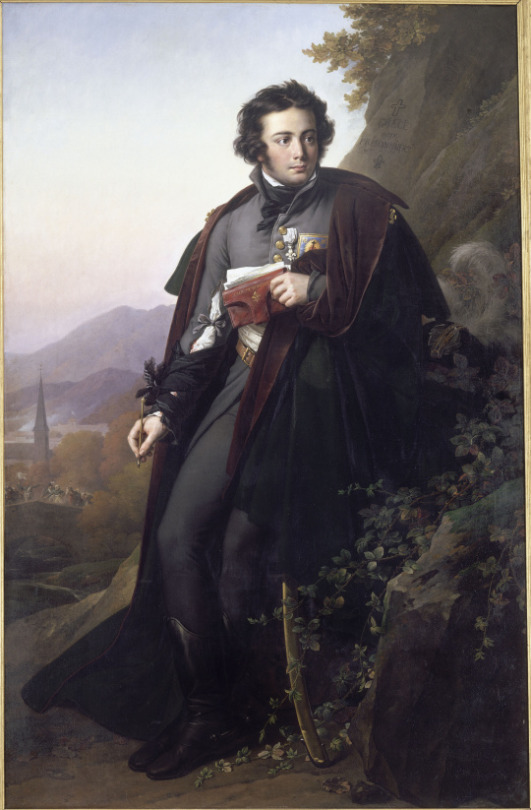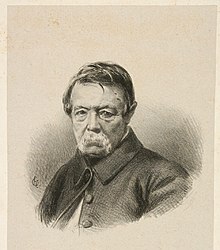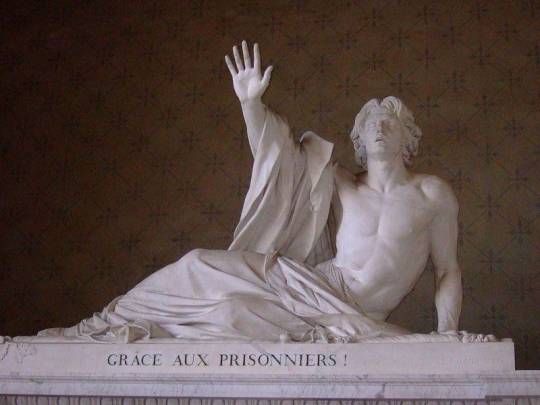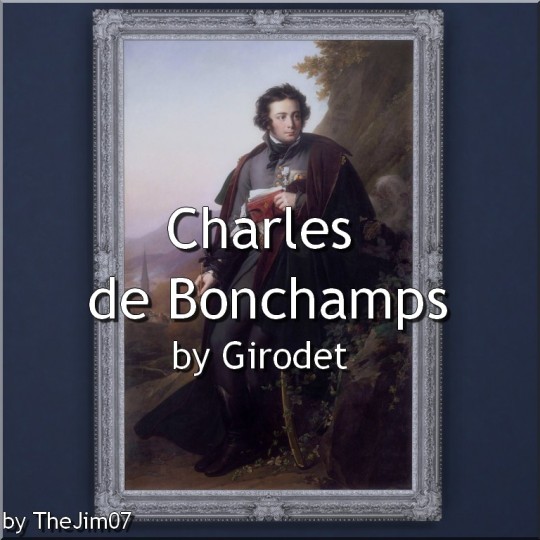#charles melchior artus de bonchamps
Text
"...followed her father, disguised herself as a man, and fought as a Royalist cavalier in the troops of Charles Melchior Artus de Bonchamps during the Vendéan insurrection against the French Revolution (in 1793) and took part in all battles of the war.
(...)
On one of her own experiences, Bordereau wrote: 'Arriving near the Loire, I destroyed five of my enemies, and finishing off the day, I broke my sword on the head of the last one... Seeing only one horseman near me, I doubled back to our army. I alone, killed twenty-one that day. I'm not the one who counted them, but those who followed me, and if they hadn't said so, I wouldn't have spoken about it myself.'"
2 notes
·
View notes
Text
RENEE BORDEREAU // SOLDIER
“She was a French soldier, nicknamed the Angevin. She followed her father, disguised herself a man, and fought as a Royalist cavalier in the troops of Charles Melchior Artus de Bonchamps during the Vendean insurrection against the French Revolution, and took part in all battles of the war. She reputed to have killed some 20 of the opposing army, including slitting the neck of her own uncle who was a republican.”

0 notes
Text
Le Pardon de Bonchamps

Very eloquent, this grave to the glory of the Vendean leader was paradoxically created in the XIXth century by the descendant of one of his enemies. Like a sign of reconciliation, it is under the strokes of a republican soldier's son that his block of marble morphed into the apotheosis of the royalist general, and, through him, into the celebration of triumphant goodness and humaneness.

Charles Melchior Artus, Marquis de Bonchamps, was born in 1760 in Jurvadeil (Anjou). He served in India and was a member of the royal army when the French Revolution broke out. He took refuge in his estate of La Barronière where revolted peasants came in 1793 to ask him to lead them. He invested part of his personal fortune to equip his little contingent. A cautious general, he regularly faced the Republican troops without fate being always favorable to him.
On October 17, 1793, he takes part to the undecisive battle of Cholet which ends up in a vendean defeat. The insurgents leave around 8000 men on the battlefield. Bonchamps is fatally wounded. The Catholic and Royal Army withdraws on St Florent le Vieil with 5000 prisoners and the general in agony.
Defeated, the Vendean peasants, sickened by the loss of their comrades, want to avenge them by executing the republican prisoners. The slaughter is prepared, the city is furious, the bloody intent of his men reaches up a dying Bonchamps. Horrified by this behavior, he gives his last order - grace for the prisoners! His cousin d'Autichamp jumps on his horse and rushes toward those who were about to do something irredeemable. The unexpected, merciful order bursts out and spreads like wildfire into the city : “Grace! Grace for the prisoners! Bonchamps wants it! Bonchamps commands it!" This event became a real idealized image of the history of the Wars in Vendée, the parallel being very clear for the partisans of the Catholic and Royal Army between the dying Bonchamps' forgiveness and the words of Jesus dying on the Cross: "Forgive them, for they don't know what they are doing".
The general's last will is respected and the republicans freed against the oath that they will never again serve against the vendean armies. Bonchamps breathes out his last on October 18 and is buried in St Florent le Vieil.
Bonchamps's charity wasn't especially rewarded, the republican soldiers were forced to take arms again against those who had spared them, and they were given the instruction not to mention this act of generositye. They were told to say they were saved from the clutches of the rebels by the republican army. It is sometimes difficult to admit what's good when you find it in your worse enemy...

(David d’Angers (1847), lithograph by Henri-Charles Oulevay)
Pierre Jean David, called David d'Angers, didn't take part in the events since he was born in 1788. A sculptor, he begins his career under the First Empire (he will then work on the friezes of the Arc de Triomphe). He continues his career under the Restauration and even becomes a teacher in the Ecole des Beaux Arts de Paris.
When in 1817 a subscription is launched to build a grave for General Bonchamps, David shows a great eagerness to participate to the undertaking. Why ? Simply because his father was one of the 5000 prisoners owing their life to this man...
He creates the grave (1825), choosing of course as a subject this scene which saved his father: Bonchamps on his death bed rises and raises his hand to halt the incoming slaughter, his lips opening to deliver the sentence carven in the tomb." Grâce aux prisonniers!" The style is perfectly neoclassic, the wounded is an opportunity to work on a body that is glorified in his heroic nudity and the drapery in a sheer style antique. The face is already showing a certain baroque romantism: the loose hair, the face contracted by a pain that seems to be as much the physical pain of agony as the moral pain about men's behavior. His lips let out his last breath, which, taking the life of one man, saves 5 000.

The grave is still visible today in the church of St Florent le Vieil, a copy is displayed in the museum of Angers.
Translated from this article: Source
"Bonchamps was the one that the Rebels cherished the most and to whom at the same time the greatest talents were granted."
Jean-Baptiste Kléber
#french revolution#guerres de vendée#charles melchior artus de bonchamps#david d'angers#battle of cholet#sculpture#arts and crafts#xix#le pardon de bonchamps#today in history
15 notes
·
View notes
Link

Hi everyone
Charles Melchior Artus, Marquis de Bonchamps (1760–1793), was a French politician and leader of the Vendean insurrection of Royalists against the Republic during the French Revolution.
This portrait was made by the French artist Anne-Louis Girodet Roucy-Trioson in 1824. It is currently exhibited at the Museum of Art and History in Cholet, France.
Charles Melchior Artus de Bonchamps (3100§/Env.8) - Painting - 8 swatches
Happy Simming
Jim
Polygon Counts:
High/Med/Low
38/38/38
Additional Credits:
TSRW, S4S, S4PE.
EA/Maxis for wood texture from TS3.
Faithful reproductions of two-dimensional public domain works of art are public domain.
25 notes
·
View notes